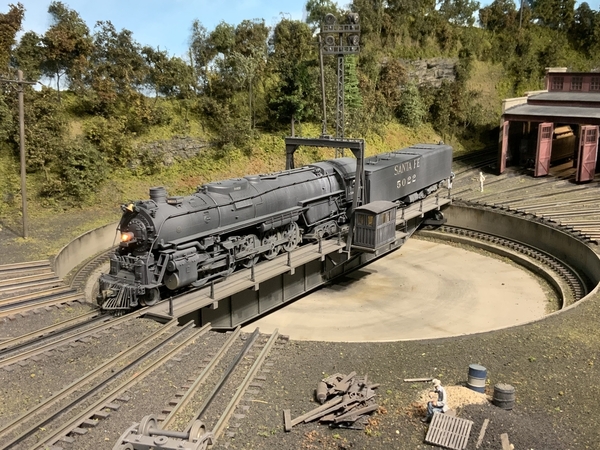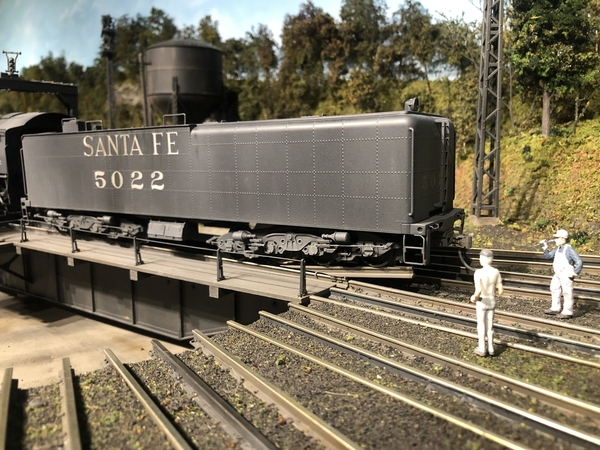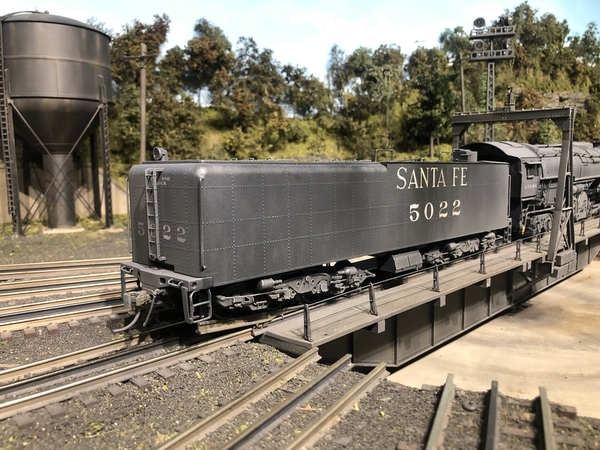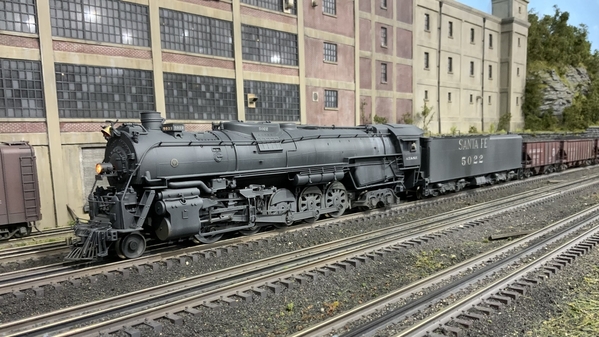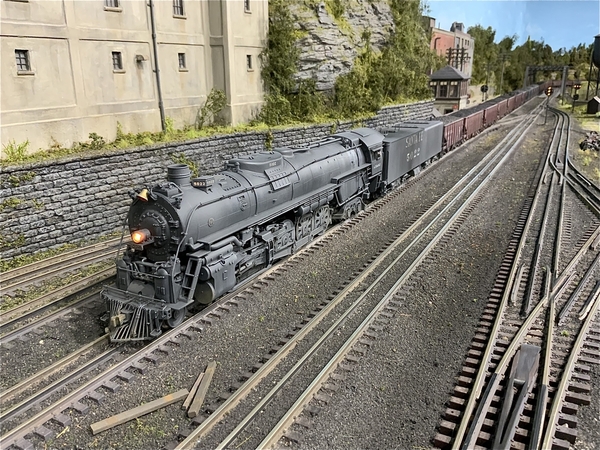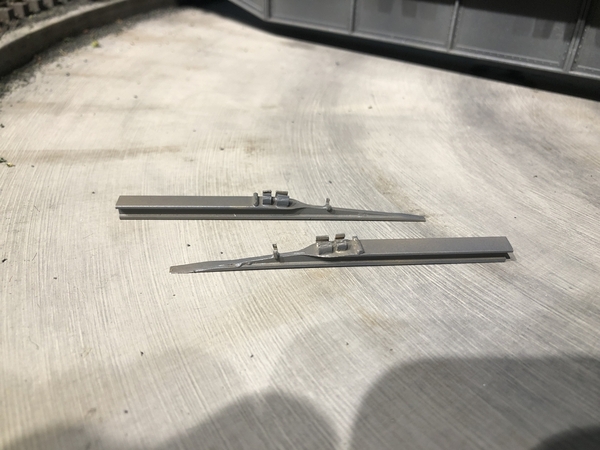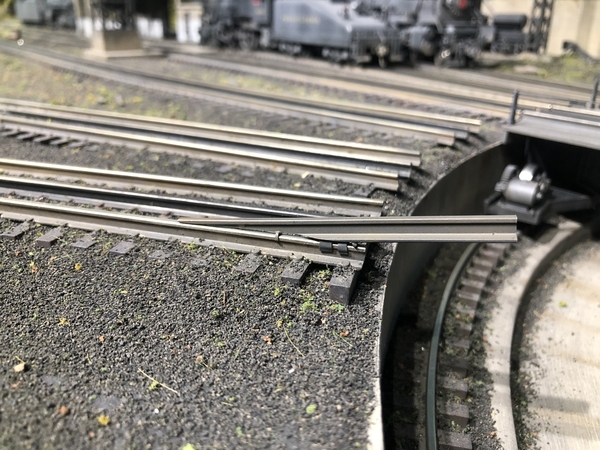Here’s a few quick phone shots of my latest engine project, one that seemed to drag on for a long time, mostly due to it showing up in the beginning of the summer. I worked on it here and there since May and the final holdup was waiting on parts to swap out the sounds (Lionel 3751 sounds and a 50mm Fat Boy).
Here it is testing out my rather crude TT extensions. I hope to finish the final vids this weekend and hopefully snag some better shots. If you poke around the internet you will actually find the 5022 hanging it’s butt off the end of the TT in Columbus in 1956. I was pretty stoked to find this cab number!




